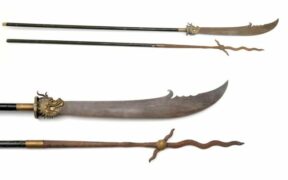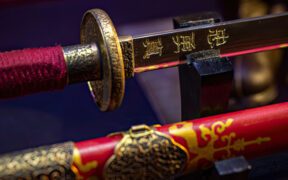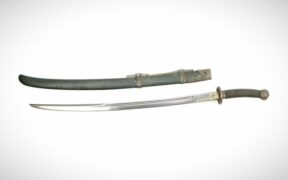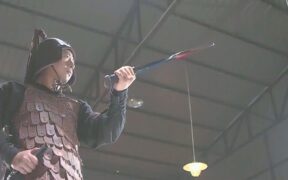Our content features commercial links to our products, committed to transparent, unbiased, and informed editorial recommendations. Learn More
Guan Yu’s Green Dragon Crescent Blade Mystery Debunked
NO AI USED This Article has been written and edited by our team with no help of the AI
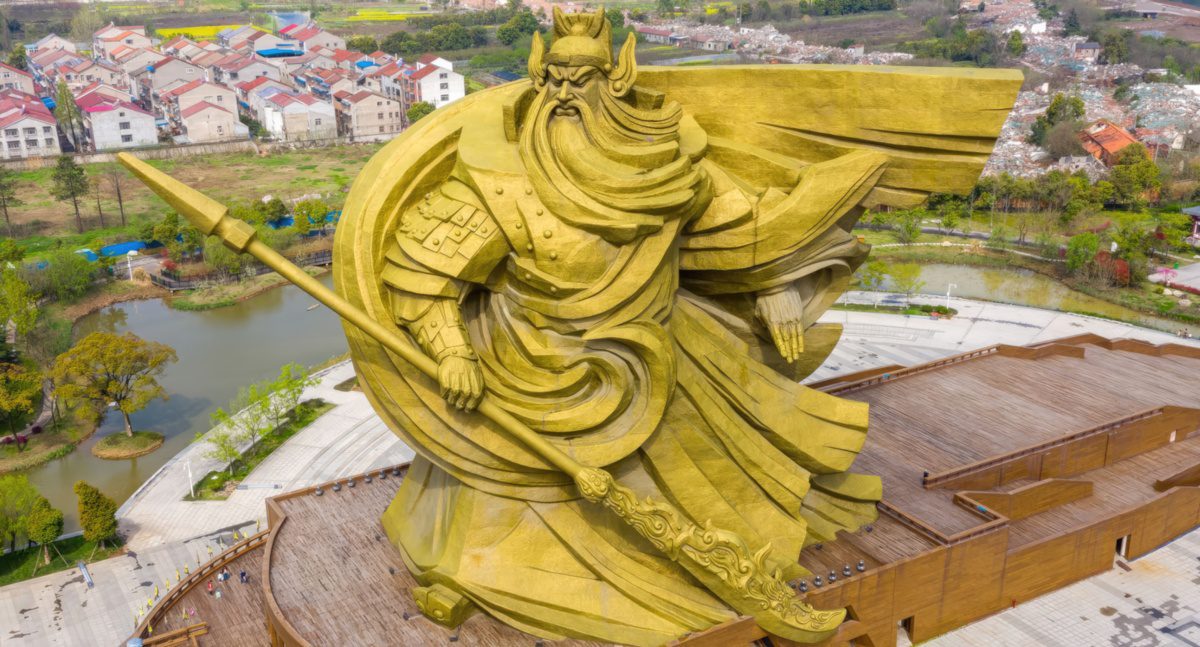
There is no denying the influence that weaponry has had on the development of society and the conduct of war throughout recorded history. The impact and use of these weapons have inspired countless myths and legends, and in the vast majority of these stories, a legendary sword or spear plays a pivotal role.
The Qinglong Yanyue Dao, often known as the Green Dragon Crescent Blade (靑龍偃月刀), is one example. This sword, which appears in the Chinese historical classic Romance of the Three Kingdoms, is said to have been forged by a renowned Chinese swordsmith and is associated with various myths, including the slaying of a dragon. This article will discuss the Green Dragon Crescent Blade and its characteristics, how it is used, and its history and legends.
Characteristics
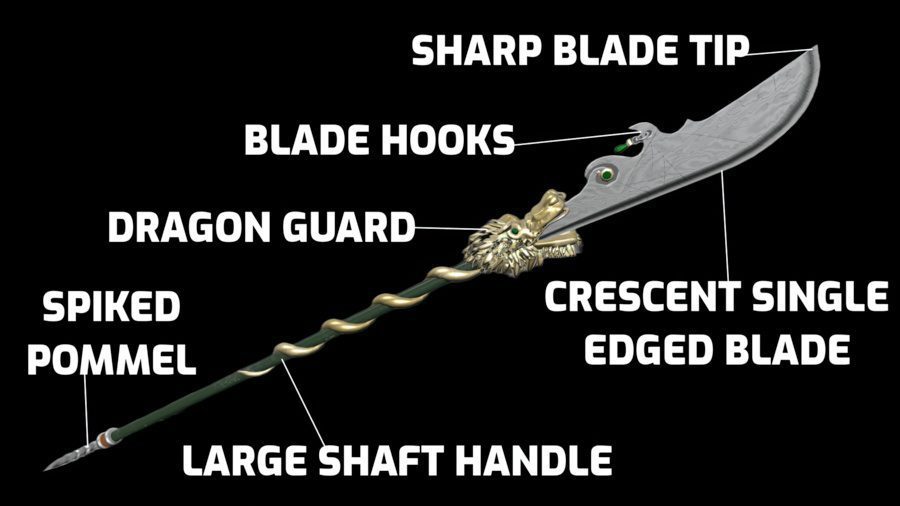
The Green Dragon Crescent Blade has all the characteristics that make a historical Guan Dao sword or polearm. It is a traditional Chinese weapon that resembles those from medieval times. Thanks to its length and powerful slashing blade, it could be emphasized and used against armor and cavalry.
Blade
The blade is one of the strongest features of this weapon. Guan Yu’s Green Dragon Crescent Blade is said to have been made out of the best high-quality steel, which could cut through anything. In reality, it could be made out of iron and types of steel. In modern times, stainless steel is for decorative purposes, and carbon steel is for testing its powerful slashing capabilities.
This Green Dragon’s blade has a single-edged crescent shape but features a sharp and pointy tip that could also be used for thrusting. On the backbone of the blade, there are 3 to 4 fiery marks; one is more significant than the others, making it helpful in hooking the enemy’s weapon or shields or for delivering powerful cutting actions.
There are some depictions of it where the dragon is actually on the backbone of the blade too.
Guard
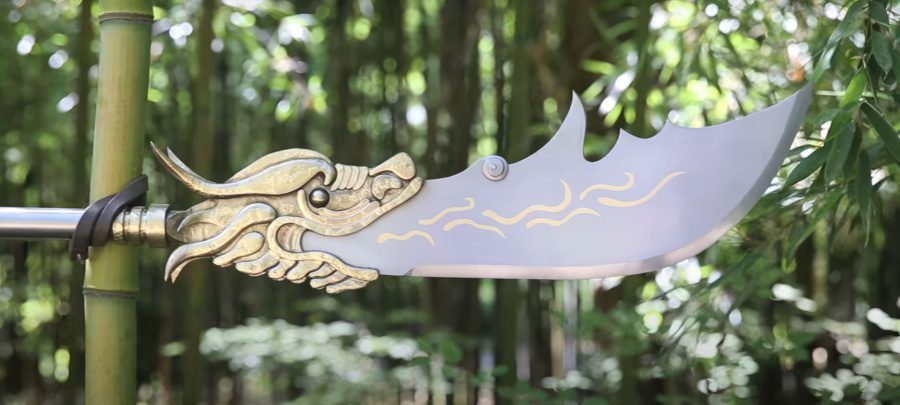
This glaive-looking weapon doesn’t necessarily have a real guard per se. It does, however, have a metal-made head of a dragon with its mouth opened to look like the steel blade comes out of it, resembling a fire-breathing dragon. It is made strictly for decorative purposes and would serve no use in actual defense.
Handle
The Green Dragon Crescent Blade is being held and carried around on a very long shaft handle. It offers extensive reach and the ability to hold it with both hands for powerful sweeping attack motions.
The shaft or handle material is usually made of metal, giving the weapon more weight. It is a massive and heavy weapon due to the length of the handle. In the legends and myths, it is said that Guan Yu could have used the weapon one-handed.
The Green Dargon Crescent Blade has a sizeable spiked pommel at the end or beginning of the handle. This is sometimes shown as a straight spear blade or one with wavy features. Nonetheless, it can serve as a thrusting tool if the need arises.
Length
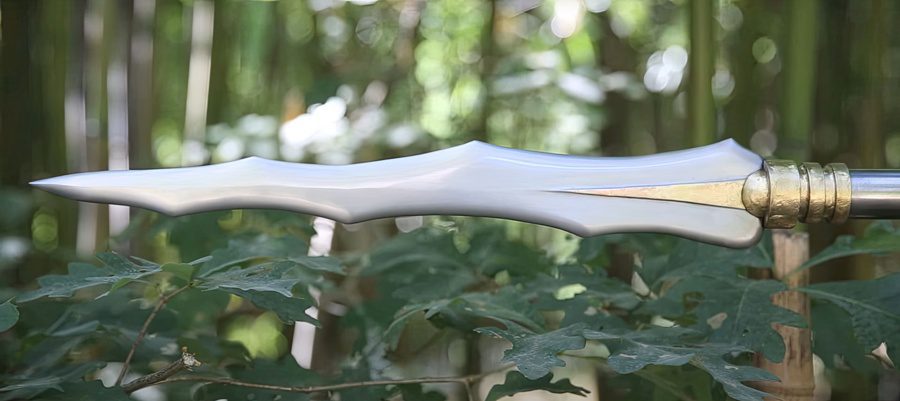
The most common length for a Green Dragon Crescent Blade, or Guan Dao, is in the range of 5 to 7.5 feet (150 to 230 cm), but the mythologized weapon of Guan Yu is said to have been two to three times the size of the average person.
Weight
It is believed that the Green Dragon Crescent Blade used by Guan Yu weighed around 88 to 99 lbs (40 to 45 kg). The one in China’s Xiezhou Guandi Temple today also weighs this amount. However, using a sword of this weight is impossible. The actual weight of a Gaun Dao is between 4.4 to 11 lbs (2 to 5 kg).
Use
The Green Dragon Crescent resembles both a spear and a sword. It has an enormous blade that is single-edged, making it powerful for slashing, but its overall weight and length make it highly unorthodox, especially in battle. It is a weapon with a very long shaft that requires two hands to hold it.
Ceremonial & Combat
As there are plenty of legends and stories about Guan Yu’s bravery and prowess with this blade, we will include it as a combat weapon. However, using a weapon like this with one hand for battle is impossible. It could be effective as a spear point against cavalry or armored troops.
The Guan Dao, has been utilized as a highly ceremonial instrument. It is seen in Chinese martial art scripts as a training tool and a weapon carried by honor guards, especially during the Ming Dynasty. With its popularity and association with Guan Yu, it served as a highly prestigious weapon for one to carry and became a favorite of royals and nobility.
Wushu & Chinese Sword Dance
Today, the Guan Dao, or Green Dragon Blade, is a highly used tool for training in Wushu or Kung Fu Chinese martial arts. It offers the quick and entertaining moves seen in Chinese sword dances. It also plays an essential part in martial arts as a tool to demonstrate strength. The Guan Dao was highly popular throughout history for training civilians and was used in Shaolin or Wudangquan arts.
Media
The Green Dragon Crescent Blade is one of the most popular Chinese weapons, like the Katana in Japan. It is commonly seen in modern media like anime and Chinese movies about General Guan Yu.
History & Legends
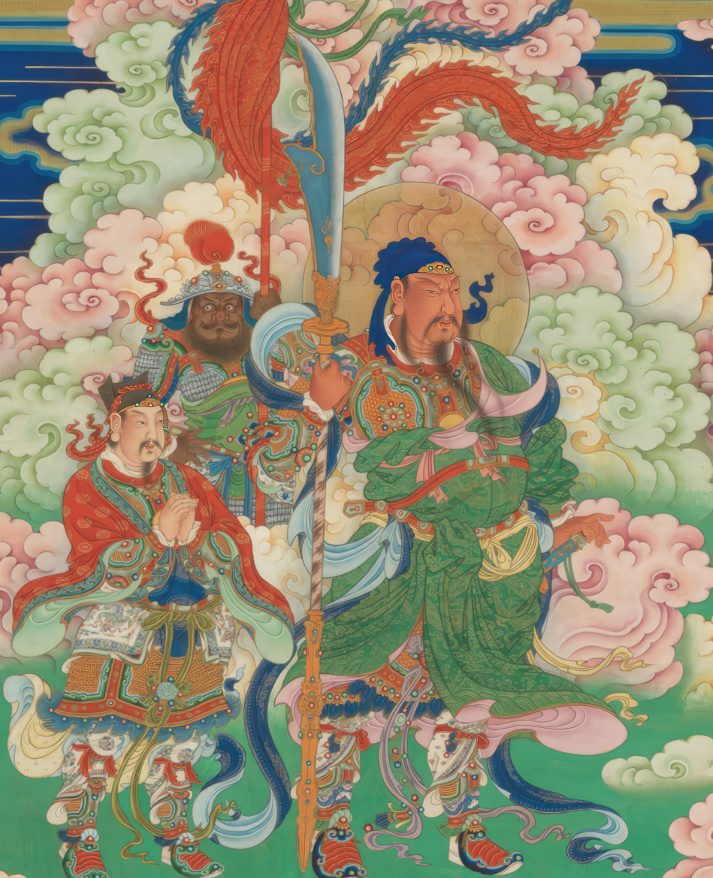
Guan Yu is one of the most popularized Chinese generals from the region known as Xie 解縣 and is most often referred to as Lord Guan. Because of his actions during the Han Dynasty, he is also seen as a deity worshipped by some Chinese folk religions. He is most commonly linked to the great weapon he used, the Green Dragon Crescent Blade.
We find out about this sword in the 14th-century Romance of the Three Kingdoms (三國演義) by author Luo Guanzhong. In this novel, the blade is forged with steel by Zhang Shiping (張世平), a person very close to Guan Yu, Liu Bei and Zhang Fei. These three men make up the brotherhood that swore to end corruption in the Han Dynasty.
Guan Yu used this sword in multiple battles, achieving many great victories under his name while wielding it with one hand. After his death, Guan Yu’s son Guan Xing killed Pan Zhang, who previously had the blade, and passed it down for generations to come. Here is some interesting and popular folklore about it.
Blacksmith
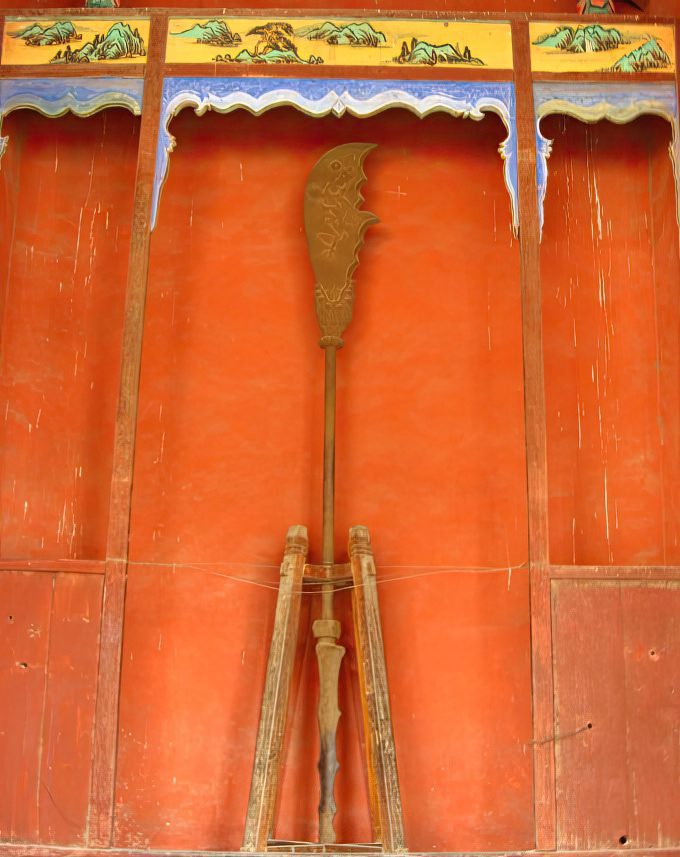
According to the most popular legend of this weapon’s creation, it could only have been constructed at night with a full moon by the world’s greatest blacksmith. Just as the blacksmith lost his confidence in designing the weapon, a storm rolled in and dripped 1780 drops of blood from the sky. The blacksmith knew the blood came from Qinglong, the Chinese Emerald Dragon, and he continued making the blade, giving it the name Green Dragon Blade.
Dragon Seal
The legend goes that Guan Yu invented the Guan Dao just before the fictional Oath of the Peach Garden occurred after meeting Liu Bei and Zhang Fei. He then killed a dragon that was following him, and its soul entered his weapon.
Blood Layer
Sometimes the Green Dragon Crescent Blade is referred to as the Frost Fair Blade. The reason is that during a battle in the snow, the blood of several slain enemies on the blade wouldn’t disappear and instead froze to form a stronger layer of blood.
Did Guan Yu Use the Green Dragon Crescent Blade?
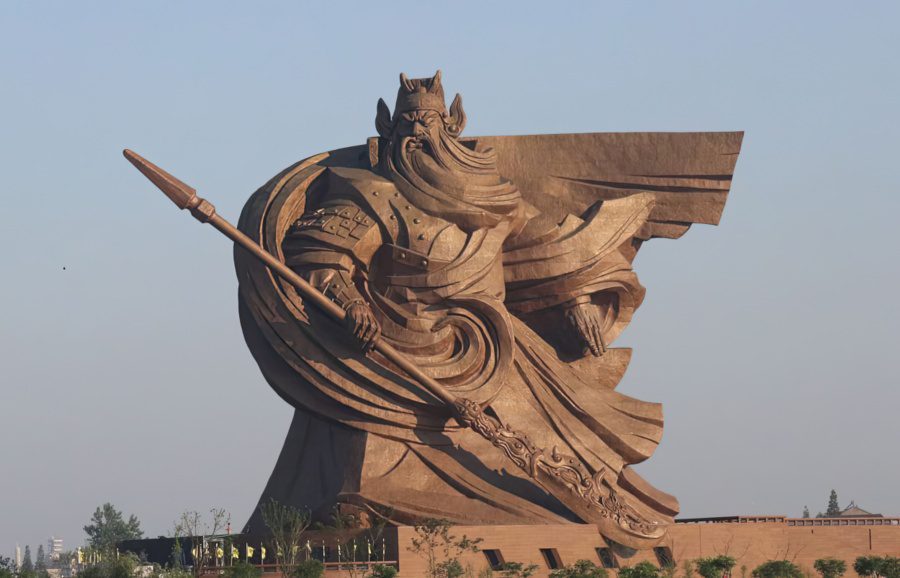
The weapon shown and linked next to the God of War, Guan Yu, is the Chinese Guan Dao sword with many mythological elements and decorations. No archeological evidence of this sword exists, even remotely close to when Guan Yu might have lived or during the Warring States era.
That is the case because the Guan Dao existed as early as the Tang or Song Dynasties, primarily for hacking through cavalry. It was also popular during the Ming Dynasty as a highly ceremonial tool and in martial arts.
The legends raising the status and position as a godly weapon started in the 13th century with the introduction of the historical novel Romance of the Three Kingdoms, where the contemporary Guan Dao might have been around them. Presumably, Guan Yu didn’t use the Green Dragon Crescent Blade in the form we know today.
What Would Guan Yu Really Use?
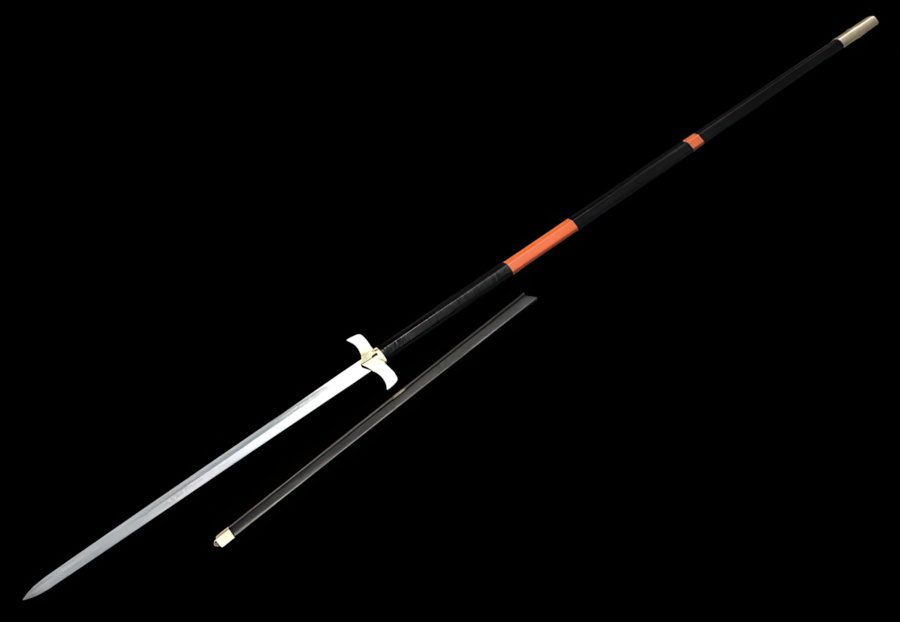
The Han Sha is a weapon found in abundance during the Han Dynasty and most commonly linked with professional warriors and high nobility both on foot or mounted position. We believe this type of weapon is what Guan Yu could have used instead of the Green Dragon Crescent Blade we know today.
The crescent types of glaive archeological findings during this era are most likely modern forgeries to preserve and safeguard the cultural identity of these great Chinese warriors.
